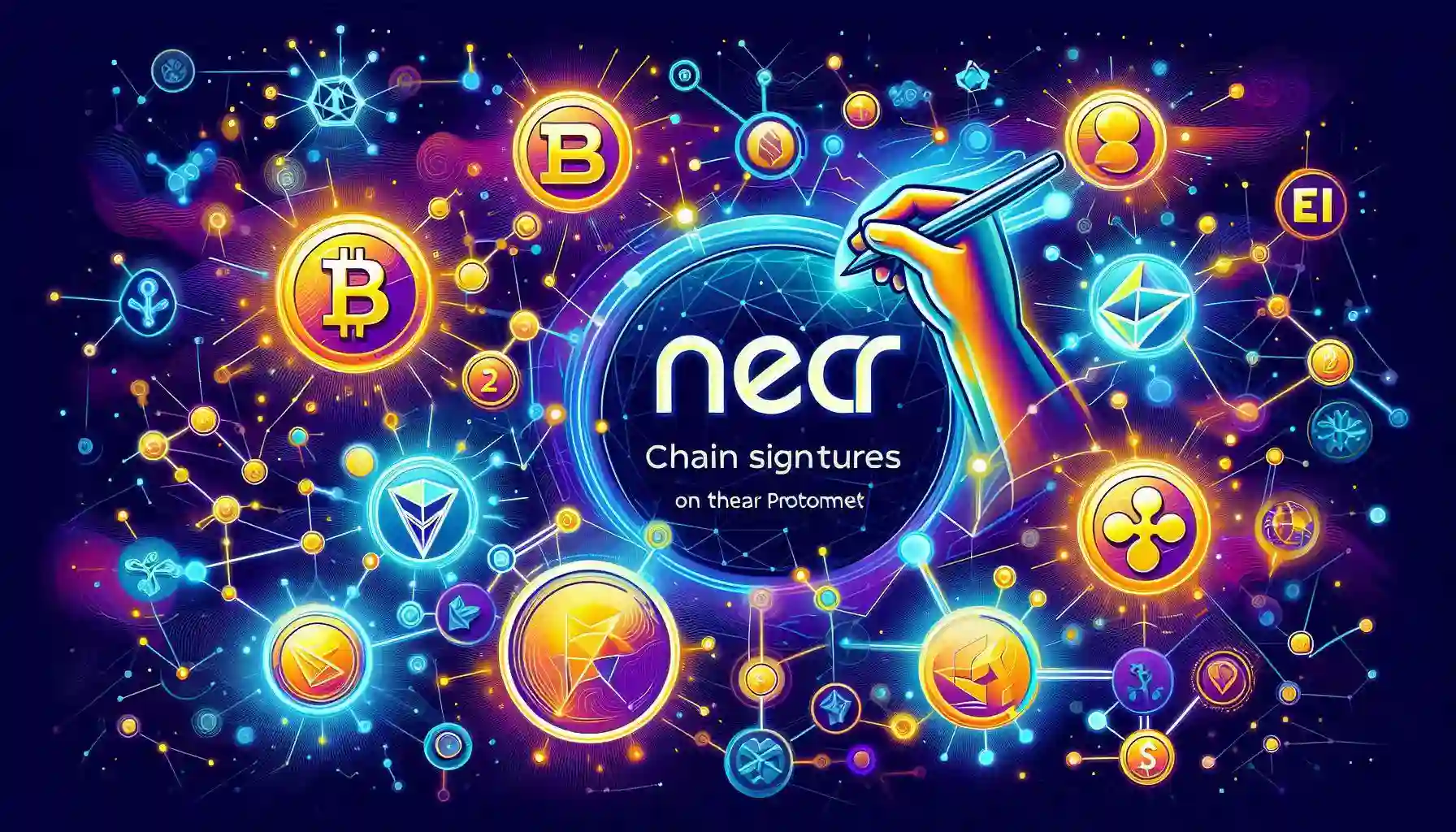On August 8, the NEAR Foundation introduced chain signatures on its mainnet. This feature lets users sign transactions across different blockchains directly from their NEAR accounts. It removes the need for traditional cross-chain bridges.
Types of Users
Chain signatures serve two main user groups:
- Crypto Natives: They desire a seamless experience across various chains.
- Average Users: They are interested in solving problems or enjoying services without focusing on technology.
Currently, NEAR’s chain signatures support several blockchains, including Bitcoin (BTC), Ethereum (ETH), and EVM-compatible chains. They also cover Dogecoin (DOGE), Ripple (XRP), Cosmos (ATOM), and Polkadot (DOT). NEAR plans to extend support to Solana (SOL) and other chains in the future.
How Chain Signatures Work
Chain signatures introduce a new method for cross-chain interactions. They use additive key derivation to create multiple subkeys from one master key. This process helps manage different blockchain accounts.
When initiating a cross-chain transaction, a smart contract on NEAR requests a signature for the transaction on the target blockchain. A multi-party computation (MPC) service then handles this request. Validators such as Pagoda, Luganodes, The Lifted Initiative, InfStones, Staking4All, Node.Monster, Black Sand Technologies, and Aurora support the MPC service. They operate in a decentralized manner, ensuring no single entity can compromise user funds.
Benefits of Chain Signatures
Chain signatures let users interact with multiple blockchains using one account. This supports the development of cross-chain decentralized applications (DApps) and omnichain tokens. NEAR sees this as a step towards a more connected blockchain ecosystem. It aims to reduce barriers to entry, liquidity issues, and usability challenges.
Illia Polosukhin, CEO of the NEAR Foundation, called chain signatures a groundbreaking innovation. He said, “Chain signatures bring chain abstraction to life.” Polosukhin noted that previously fragmented DeFi liquidity will now form a single DeFi layer for all chains. Users will no longer need to manage multiple wallets, addresses, or token gas fees. Smart contracts can now handle transactions for any blockchain, including Bitcoin. This opens new possibilities for financial apps in Web3, benefiting both current users and new ones.
NEAR’s Growing User Base
Chain signatures are central to NEAR’s goal of achieving chain abstraction. This concept aims to create a unified experience across different blockchain networks. By simplifying interactions with multiple chains, NEAR hopes to make decentralized finance more accessible.
As of July 2024, NEAR is the second most used blockchain by daily active users, with 1.95 million. This is close to TRON’s 2.1 million users. NEAR’s user base has grown significantly from 67,000 daily active users just over a year ago. Much of NEAR’s growth is due to user-generated activity, particularly from the discount shopping application Kai Kai in Taiwan.
The post Chain Signatures Go Live on NEAR Protocol, Expand Cross-Chain Possibilities appeared first on Cryptonews.















